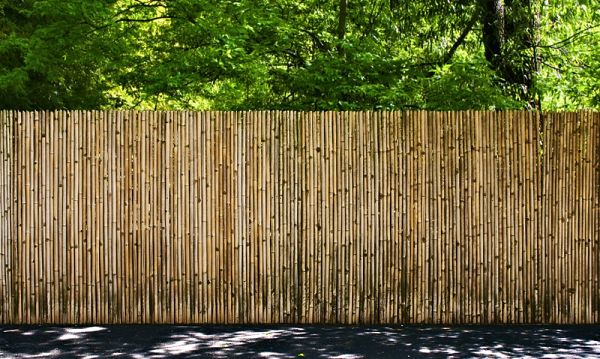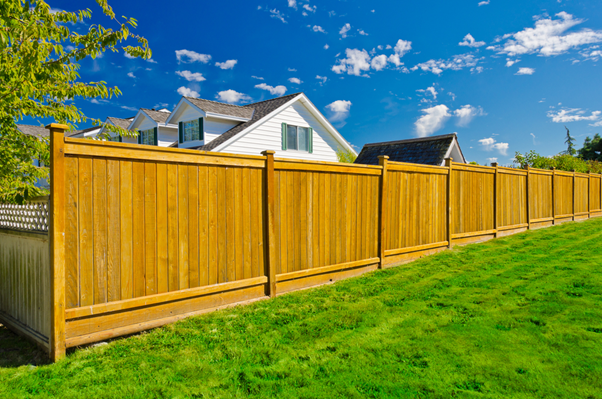All Categories
Featured
Choosing the optimum height requires cautious consideration of several elements, consisting of regional laws, your security needs, and the type of fencing material you pick. Here's an overview to aid you make the ideal choice when determining your fencing elevation for maximum safety.
![]()
In some locations, you might likewise need an authorization for fences taller than a particular elevation. Additionally, make sure you understand any type of neighborhood standards, particularly if you stay in a community with a homeowners' association (HOA) that implements particular policies on fence product, height, and style.
The goal is to make it testing for any individual to conveniently breach the fence or scale. Taller fences reduce the danger of burglaries, especially when incorporated with various other deterrents like sharp articles or trellis extensions on top. If your residential property lies in a high-crime location or you are concerned regarding intruders, choosing for a taller fencing can considerably boost your satisfaction.
![]()
Wrought Iron Fences: These are typically 6 to 8 feet high and are optimal for protection objectives. The strength and sturdiness of functioned iron make it challenging for burglars to damage through or climb. Wooden Fences: While wooden fences give personal privacy, their safety and security depends on their elevation and style. A strong wood fence that is at the very least 6 feet tall can serve as a strong obstacle, yet including attributes like anti-climb tops can enhance its protection. Chain-Link Fences: Chain-link fences are typically picked for their cost-effectiveness and toughness. To increase security, several house owners include barbed or razor cable to the top of the fencing or raise its height to 8 feet or more. When choosing a material, consider the compromises between aesthetic appeal and safety. Products like timber or plastic provide personal privacy yet could not be as hard to climb up as steel fencings, while wrought iron or steel fencings provide longevity and raised protection.
On the various other hand, if exposure is a top priority-- particularly for monitoring purposes or to guarantee that neighbors can see dubious activity-- after that a much shorter, extra transparent fence may be perfect. Chain-link fences, while offering less personal privacy, enable better exposure, making it much easier for neighbors or passersby to identify any person trying to breach your fencing.
Anti-Climb Features: Include trellis expansions, directed tops, or barbed wire to make it more tough for burglars to scale the fence. Activity Sensors and Monitoring Cameras: Placing electronic cameras along your fence line or setting up motion detectors can assist identify questionable task and even more dissuade intruders. Electric Fencing: For greater levels of protection, take into consideration adding an electrical fence to your existing fencing. These systems are made to supply a mild shock to anybody that attempts to touch or climb the fencing. 6. Take Into Consideration Looks and Community Influence. While protection is the primary problem, it's likewise crucial to think about the aesthetics of your fence, especially if you stay in a neighborhood with a strong feeling of community. A fencing that is as well tall or imposing can produce a hostile ambience and may not be popular by next-door neighbors.
Consider your neighborhood's general aesthetic and choose a fence elevation that stabilizes both security and curb charm. A fencing that is visually appealing while still supplying appropriate security can improve both the look and the safety and security of your building.
Verdict. Choosing the ideal fencing elevation for optimal safety calls for stabilizing practicality, appearances, and local regulations. In basic, a fencing elevation of 6 to 8 feet is optimal for giving appropriate defense versus intruders, though taller fences can be made use of for included security if essential.
- Understand Neighborhood Rules and Zoning Rules. Before you decide on a fencing elevation, it's necessary to talk to your neighborhood town or house owners' organization to ensure that you remain in compliance with neighborhood zoning legislations and guidelines. The majority of locations have constraints on the height of fences, specifically ahead backyards or along home lines. As an example, domestic fences in front backyards are typically limited to a height of 3 to 4 feet, while backyard fencings can be greater-- typically approximately 6 to 8 feet or more.

In some locations, you might likewise need an authorization for fences taller than a particular elevation. Additionally, make sure you understand any type of neighborhood standards, particularly if you stay in a community with a homeowners' association (HOA) that implements particular policies on fence product, height, and style.
- Consider Your Safety Needs. The elevation of your fence plays an essential duty in the degree of protection it supplies. A fence that is too short may be very easy to climb up or jump over, while a taller fencing can serve as a stronger deterrent against trespassers. For optimal security, think about a fencing height of a minimum of 6 feet, with lots of homeowners opting for 8-foot fences or greater when safety and security is a top priority.
The goal is to make it testing for any individual to conveniently breach the fence or scale. Taller fences reduce the danger of burglaries, especially when incorporated with various other deterrents like sharp articles or trellis extensions on top. If your residential property lies in a high-crime location or you are concerned regarding intruders, choosing for a taller fencing can considerably boost your satisfaction.
- Select the Right Fence Product. The material of the fencing you choose also influences the safety it supplies. Some materials give more robust security than others, also at the exact same height. For example:

Wrought Iron Fences: These are typically 6 to 8 feet high and are optimal for protection objectives. The strength and sturdiness of functioned iron make it challenging for burglars to damage through or climb. Wooden Fences: While wooden fences give personal privacy, their safety and security depends on their elevation and style. A strong wood fence that is at the very least 6 feet tall can serve as a strong obstacle, yet including attributes like anti-climb tops can enhance its protection. Chain-Link Fences: Chain-link fences are typically picked for their cost-effectiveness and toughness. To increase security, several house owners include barbed or razor cable to the top of the fencing or raise its height to 8 feet or more. When choosing a material, consider the compromises between aesthetic appeal and safety. Products like timber or plastic provide personal privacy yet could not be as hard to climb up as steel fencings, while wrought iron or steel fencings provide longevity and raised protection.
- Privacy and Visibility Considerations. If privacy is a significant problem, particularly in suburbs, you may prefer a taller fence that blocks the sight from the outside. Solid timber or vinyl fencings that are 6 to 8 feet high can protect against others from seeing into your residential or commercial property, which helps enhance safety and security by minimizing the probability of intruders scouting your home.
On the various other hand, if exposure is a top priority-- particularly for monitoring purposes or to guarantee that neighbors can see dubious activity-- after that a much shorter, extra transparent fence may be perfect. Chain-link fences, while offering less personal privacy, enable better exposure, making it much easier for neighbors or passersby to identify any person trying to breach your fencing.
- Added Safety Attributes to Enhance Elevation. While height is a crucial part of protection, it is necessary to bear in mind that a high fence alone might not be sufficient to prevent established trespassers. Think about incorporating your fencing with various other security features for maximum defense:
Anti-Climb Features: Include trellis expansions, directed tops, or barbed wire to make it more tough for burglars to scale the fence. Activity Sensors and Monitoring Cameras: Placing electronic cameras along your fence line or setting up motion detectors can assist identify questionable task and even more dissuade intruders. Electric Fencing: For greater levels of protection, take into consideration adding an electrical fence to your existing fencing. These systems are made to supply a mild shock to anybody that attempts to touch or climb the fencing. 6. Take Into Consideration Looks and Community Influence. While protection is the primary problem, it's likewise crucial to think about the aesthetics of your fence, especially if you stay in a neighborhood with a strong feeling of community. A fencing that is as well tall or imposing can produce a hostile ambience and may not be popular by next-door neighbors.
Consider your neighborhood's general aesthetic and choose a fence elevation that stabilizes both security and curb charm. A fencing that is visually appealing while still supplying appropriate security can improve both the look and the safety and security of your building.
Verdict. Choosing the ideal fencing elevation for optimal safety calls for stabilizing practicality, appearances, and local regulations. In basic, a fencing elevation of 6 to 8 feet is optimal for giving appropriate defense versus intruders, though taller fences can be made use of for included security if essential.
Latest Posts
Explore Save Big on Car Maintenance with Montclare Auto Repair’s Special Deals
Published en
1 min read
Find Oil Changes & More: Full Repair Options from Montclare Auto Repair
Published en
1 min read
Why Chicago Drivers Choose Montclare Auto Repair for Trusted Service and Big Savings
Published en
1 min read
More
Latest Posts
Explore Save Big on Car Maintenance with Montclare Auto Repair’s Special Deals
Published May 30, 25
1 min read
Find Oil Changes & More: Full Repair Options from Montclare Auto Repair
Published May 28, 25
1 min read
Why Chicago Drivers Choose Montclare Auto Repair for Trusted Service and Big Savings
Published May 27, 25
1 min read